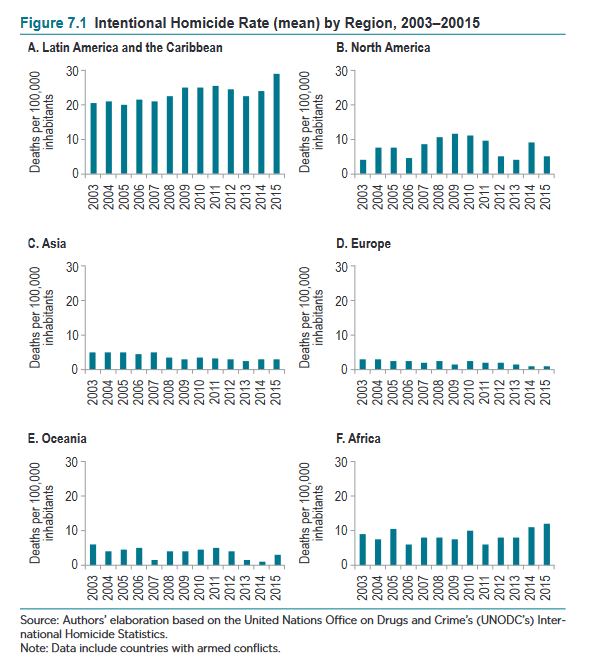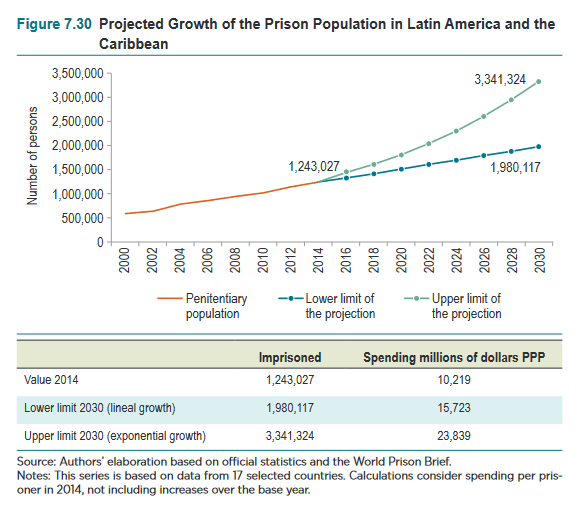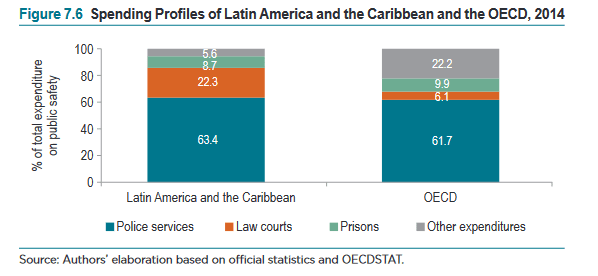Henning Peters
Posts 3
Comments2
Hi Larks,
Thank you for raising this important topic.
Our assertion that punitive approaches in Latin America are failing is based largely on evidence from the following report: Link to report: Smart Spending on Citizen Security.
When we used the phrase "iron-fisted war on crime", our intent was not to critique any single policy, such as the Salvadoran Gang Crackdown. While I have some initial personal views, I don’t consider myself an expert on this particular approach’s potential effectiveness, possible adaptations, or the ethical considerations it raises.
Instead, our focus is on broader trends observed across Latin America, and the conclusions we’ve drawn from them. I acknowledge that “iron-fisted war on crime” may have been misleading, and we’re considering adjusting our language in future discussions. Here are the key trends we meant to address:
- Increasing violence rates: Even during periods of economic growth and heightened security measures, violence has continued to rise in Latin America.
Conclusion: Past approaches have generally failed to deliver sustainable safety improvements. - High incarceration rates: There’s been a significant increase in prison populations, leading to substantial government spending and economic losses both for the incarcerated individuals and for society overall.
Conclusion: Simply incarcerating more people is not a sustainable solution. - Disproportionate spending on law enforcement and courts: Compared to OECD countries, Latin America allocates relatively high budgets to judicial and punitive measures, with less investment in preventative approaches (e.g., CBT programs to reduce criminal behavior). Note: "Other expenditures " includes spending on crime prevention.
Conclusion: Latin American policies seem to diverge markedly from those of other countries, particularly in prioritizing punitive over preventive strategies.
The report further elaborates on the drawbacks of extensive incarceration policies. For instance, in many Latin American countries, minor drug offenders (such as those charged with drug consumption) are often incarcerated. Research shows that imprisoning low-risk individuals like drug users can increase their likelihood of committing serious crimes in the future—likely due to exposure to more serious offenders and the stigma of having been imprisoned. While incarceration may help reduce future crime for medium- to high-risk populations, it has little impact on those who were low-risk to begin with. Therefore, our critique is not aimed at imprisonment itself, but rather at poorly targeted incarceration practices.
We are not opposed to all punitive approaches and believe that targeted, evidence-based strategies—such as hot-spot policing, to name a non-CBT approach—should be prioritized.
Lastly, a brief disclaimer: The report cited is several years old. We’ve cross-checked some of its data to confirm that certain trends are still current, but not all data points have been updated.
Warm regards,
Henning
Co-founder of ACTRA




I agree to your general analysis. Just some quick thoughts (if you have other ideas, I'd be excited to hear them!)
For us at ACTRA, communicating our benefits in terms of x times cash has been very helpful, because we do not have the typical "one outcome measure makes up for 80% of the effect" situation: Crime reduction leads to reduced interpersonal violence like homicides (DALYs), averts economic damage ($) and has wellbeing benefits (WELLBYs). Our current analysis suggests, that each of those three is about 1/3 of our total effect. So having something, where we cann sum these benefits up and then compare to other charities that might focus on only one of these is very helpful for us.
If we want to keep using cash estimates I see us either
1) incorporating best guesses for our spillover effects etc. in our CEA based on the scientific literature available, discounting them somewhat but not too heavily, to be comparable to the Give Directly estimate
2) Consciously deciding not to include spillover effects etc. and then comparing "apples to apples". So if there was a simple table saying "this is the direct Give Directly effect, this is the additional spillover effect and this is X, Y, and Z", then we can basically produce the same table for our charity with some fields saying n/a and that would make it comparable somehow...